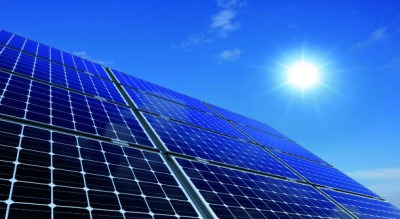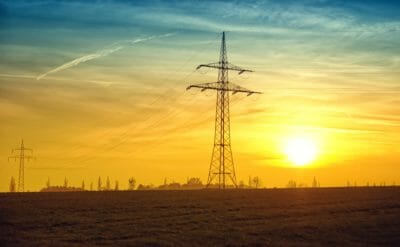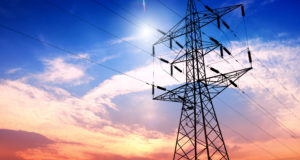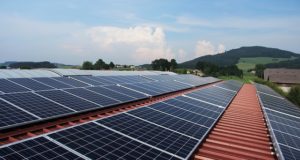
What type of sine wave inverter works best for your solar power needs?
When most people think about solar panel systems, they think of the panels themselves. Those monocrystalline or polycrystalline black panels of about two feet by four feet. Solar panels themselves are ubiquitous in our society, and they can be seen on everything from pocket calculators to traffic signals, from massive solar panel farms to a single emergency solar panel system. However, not many people pay attention to or even know about the humble inverter. The inverter is the device that makes solar energy in our homes possible in the first place.
Solar Power Inverter
To understand what an inverter is, we must first understand the way a solar panel works. Solar panels are comprised of wafers of silicon that, when exposed to sunlight, produce electrical energy. The sunlight “excites” the electrons within the silicon, spurring them to motion, which generates electricity as a byproduct. Each individual silicon wafer (called a cell) is then tied to the other cells in the panel. Then, their output from the panel manifests itself as a set of wires to carry the electricity.
What most people don’t understand is that these wires don’t carry the sort of power you’ll typically find coming out of the wall plugs in your home. They carry direct current, or DC voltage. DC voltage is the same sort of power that you’ll find in car batteries. Regardless of electrical engineering prowess, most people realize that the type of electricity produced from a car or even a D cell battery is not the same type of electricity found inside their homes.
The Conversion
Therefore, we need a device to convert the direct current (DC) voltage that the solar panels put out to the alternating current (AC) voltage used in our homes, to be able to use the electrical output from a solar panel. Before we go down this road, however, note that it is entirely possible to build a home that only uses DC voltage for all of its power needs and appliances. This is how many off-grid homes are built. Using the native DC output of the solar panels to power native DC devices is by far the most efficient strategy in practice. There is a dearth of quality DC appliances out there compared to their AC counterparts.
Harness the power of the sun when the power goes out…
So what is this mysterious device that converts DC voltage to AC voltage? It’s called an inverter, and yes, you’ll need one on your solar power system. Inverters are sturdy devices that have been around in some form or another for decades. They have multiple applications, and not just for solar power systems. An inverter is used wherever someone desires to convert DC power to AC power in applications such as recreational vehicles, yachts, off-road vehicles, aircraft and more.
The study of inverters represents some relatively complex electrical engineering theory. Understanding the basic principles behind their operation is simple. In solar power systems, there are two basic kinds of inverters on the market; pure sine wave inverters, and modified sine wave inverters.
Pure Sine Wave Inverters:

A sine wave inverter is vital in converting solar energy into usable electricity
A sine wave is a steady, pulsing wave with smooth curves on the top and bottom. It is a clean waveform. If you looked at the output of one of your wall plugs through an oscilloscope, you would see a sine wave. It alternates high and low – hence the name alternating current (AC). Without getting into the complexities of sine waves, just know that the AC power that your power utility sends you and that you use from your wall plugs is pure sine wave power.
This is the kind of power sensitive electronics such as computers and televisions like to use. However, fridges and crude power tools don’t much care if they get sine wave or not. On the downside, purse sine wave inverters are the most expensive type of solar inverter you can buy.
Modified Sine Wave Inverters:
Modified sine wave inverters use an internal algorithm to produce a facsimile of a pure since wave. On the surface, it kind of looks like a sine wave, albeit a crude or pixilated one. AC motors and other appliances will run on modified sine wave inverters, but they do so at an efficiency loss of up to 20 percent due to the extra harmonics in the wave.
Therefore, while the inverter itself might be cheaper, if you buy a modified sine wave unit, your inverter will put out up to 20 percent less power. This means you could actually require more solar panels to do the same job as you would if you used a pure sine wave unit. Also, some sensitive electronics don’t run well on modified sine wave as they would on pure sine wave. Price both systems out accordingly!
In Conclusion
Finally, many solar panels now are available with built-in or onboard inverters. This option spreads the fault tolerance around multiple units. On the other hand, these inverters are located on the panels themselves, and therefore harder to get to and susceptible to things like electromagnetic pulse or geomagnetic interference such as solar flares. Whichever inverter type you choose, make sure you factor all the possibilities into the mix.
 Off The Grid News Better Ideas For Off The Grid Living
Off The Grid News Better Ideas For Off The Grid Living



